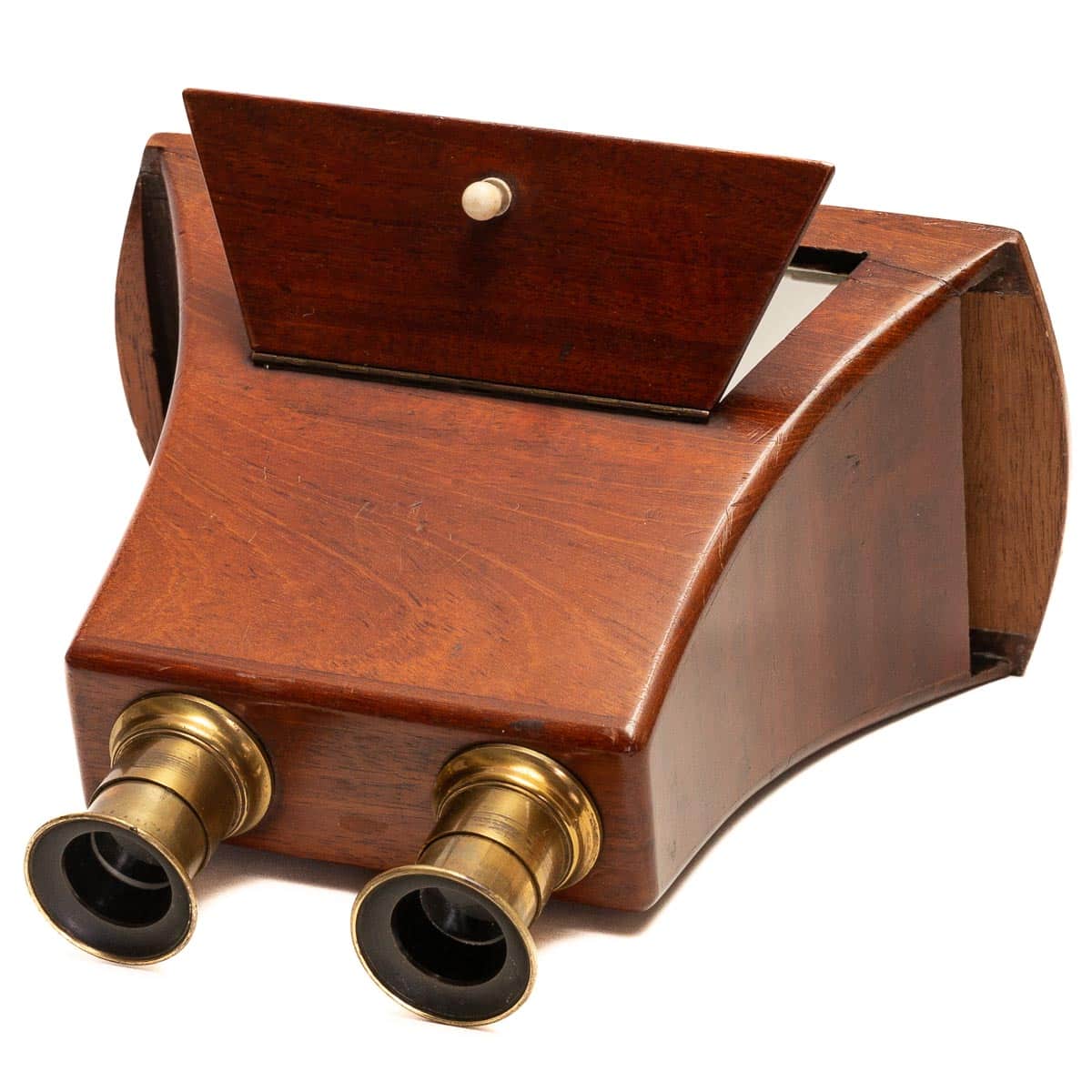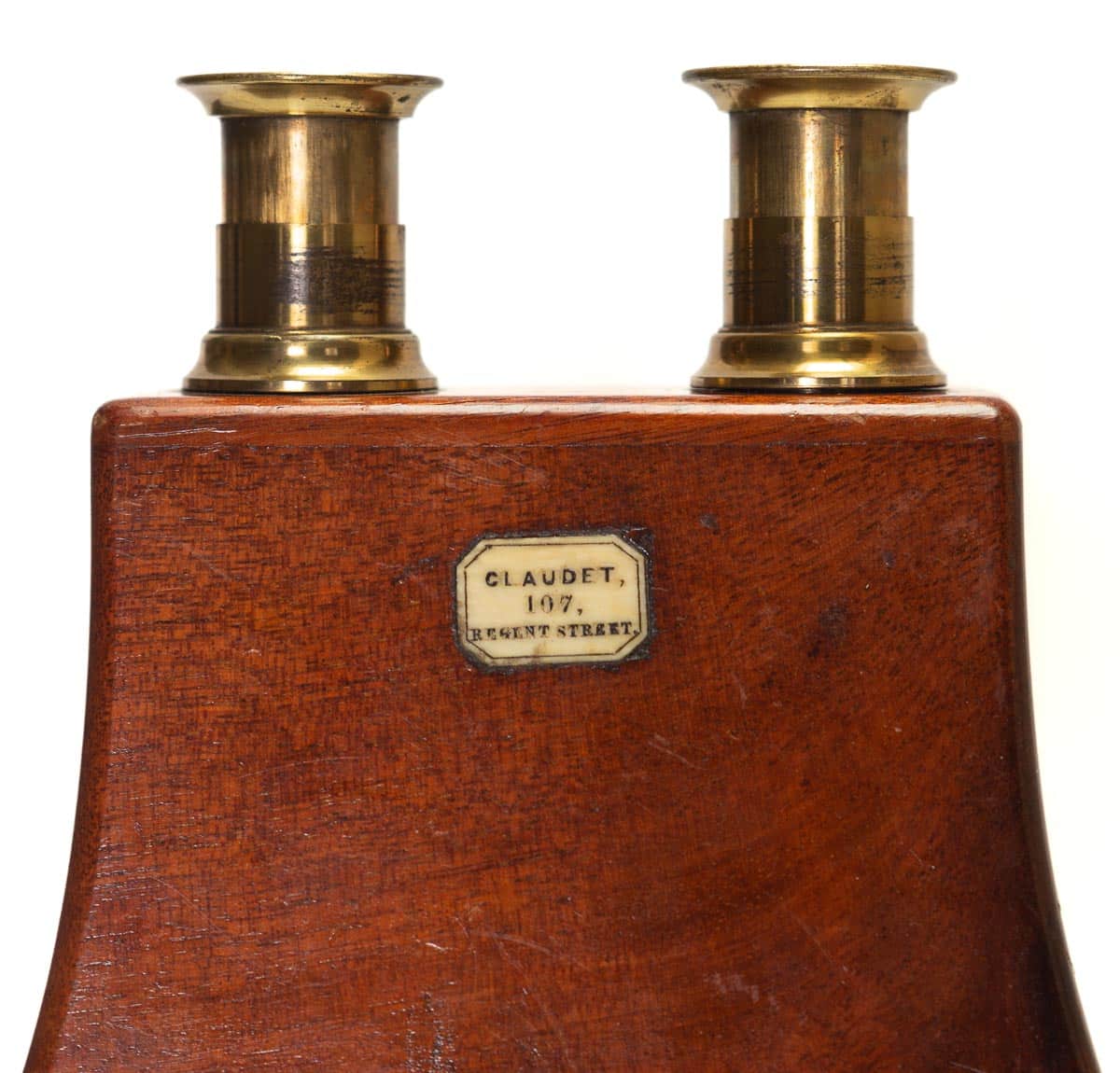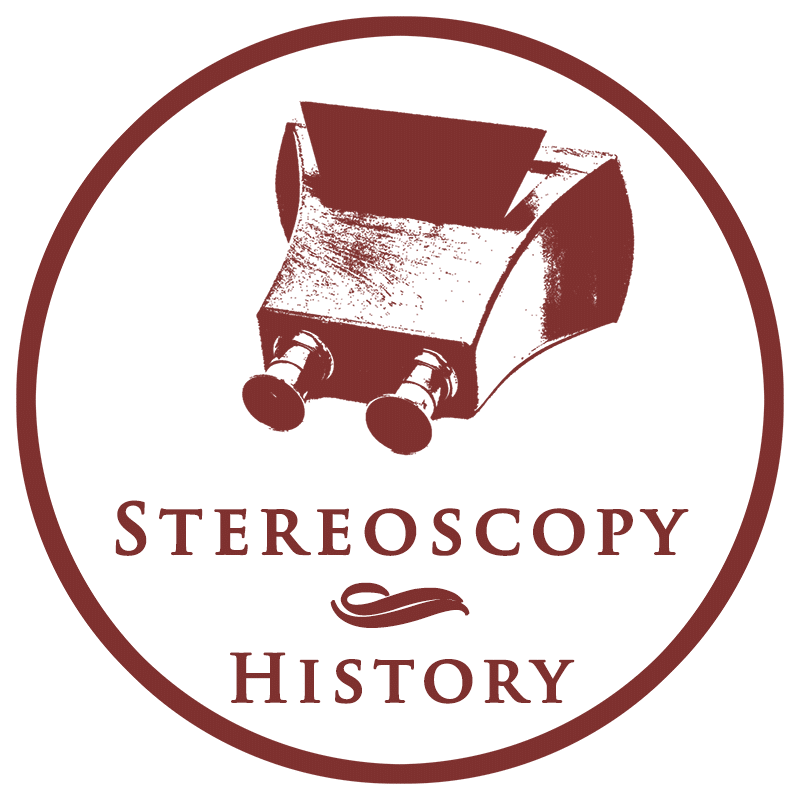
Antoine Claudet was not only renowned for his high-quality hand-coloured (stereo) daguerrotypes, but he also patented stereoscope improvements. He introduced a viewing case for stereo daguerreotypes in 18531, and he patented a design for inter-ocular adjustment and a revolving stereoscope in 18552.
Specifications
| Manufacturer: | Unknown |
| Year of introduction: | Unknown |
| Year of manufacture: | c. 1855 |
| Type: | Hand-held |
| Viewer: | Single-view |
| Serial number: | None |
| Stereoview support: | Glass and Paper |
| Stereoview format: | 9 x 18 cm |
| Lens focussing: | Yes |
| Inter-ocular adjustment: | No |
| Eyepiece blinders: | No |
| Dimensions (L x W x H): | 19 x 17 x 10 cm |
| Construction: | Walnut with copper lens tubes |
| Other features: | Label on top with Claudet 107, Regent Street |

Glossary: hand-held / inter-ocular adjustment / single-view
Antoine Claudet
Antoine François Jean Claudet was born in 1797 in Lyon, France. After the invention of the daguerreotype process in 1839, he was eager to learn the new photography process. He moved to Paris, took lessons from Daguerre himself and bought a licence to use the process in England. Claudet opened a portrait studio in London on the roof of the Adelaide Gallery. He increased the sensitivity of the daguerreotype plates, allowing shorter exposure times, which improved the quality of his portraits. Claudet became one of the most prominent and respected daguerreotypists in London. After the introduction of the Brewster-type stereoscope in 1849, he started making stereo daguerreotypes, and he became a great promoter and driver of stereoscopy. Claudet opened his last photo studio in 1851. The studio was called “Temple of Photography” and was located at 107 Regent Street in London. He died in 1867. Soon after his death, his studio burned down, destroying thousands of his daguerreotypes and negatives.
